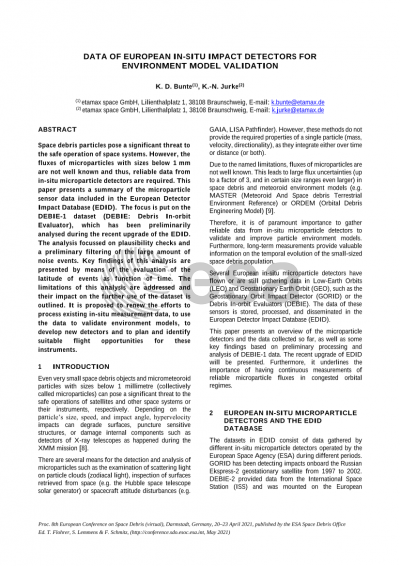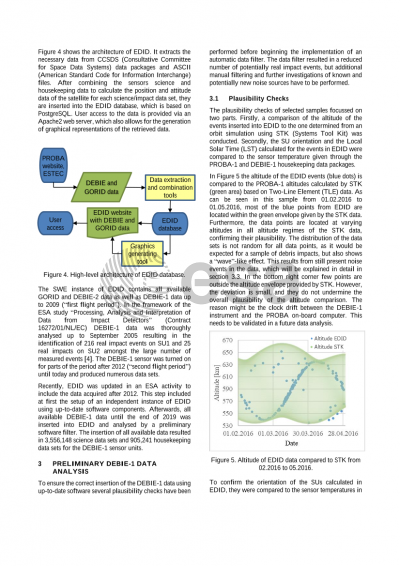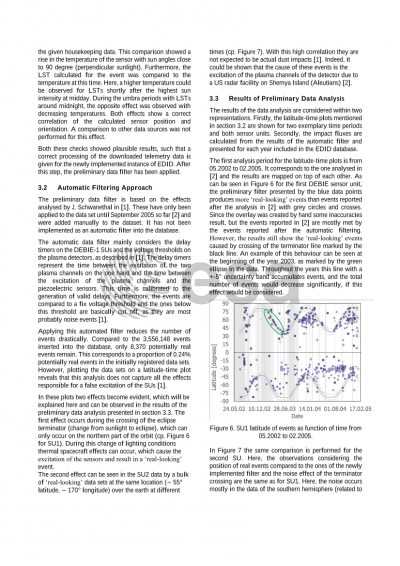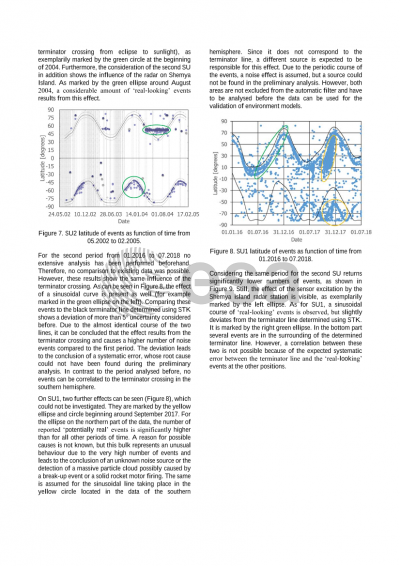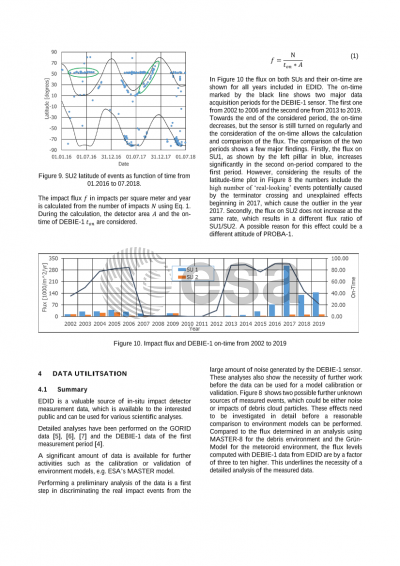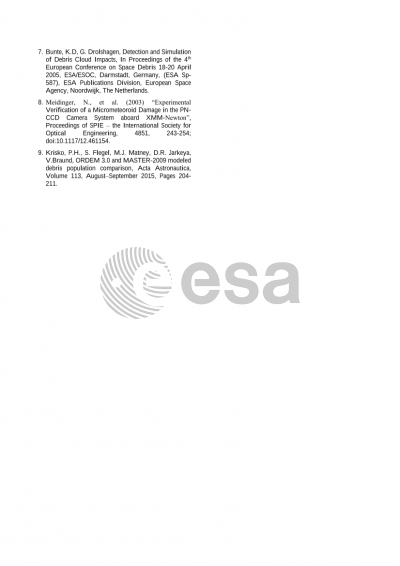Document details
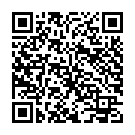
Abstract
Even very small space debris objects and micrometeoroid particulates with sizes below 1 millimetre (collectively called microparticles) can pose a significant threat to the safe operations of satellites and other space systems or their instruments, respectively. Depending on particle’s size, speed, and impact angle, hypervelocity impacts can degrade surfaces, puncture sensitive structures, or damage internal components such as detectors of X-ray telescopes as happened during the XMM mission.
There are several means for the detection and analysis of microparticles such as the examination of scattering light on particle clouds (zodiacal light), inspection of surfaces retrieved from space (e.g. the Hubble space telescope solar generator) or spacecraft attitude disturbances (e.g. GAIA, LISA Pathfinder). However, these methods do not provide the required properties of a single particle (mass, velocity, directionality) as they integrate either over time or distance.
Due to the named limitations, fluxes of microparticles are not well known. This leads to large flux uncertainties (up to a factor of 3, and in certain size ranges even larger) in space debris and meteoroid environment models (e.g. MASTER, ORDEM).
Therefore, it is of paramount importance to gather reliable data from in-situ microparticle detectors to validate and improve particle environment models. Furthermore, long-term measurements provide valuable information on the temporal evolution of the small-sized space debris population.
Several European in-situ microparticle detectors have flown or are still collecting data in LEO and GEO. The Geostationary Orbit Impact Detector (GORID) has been detecting impacts onboard the Russian Ekspress-2 geostationary satellite from 1997 to 2002. DEBIE-2 (Debris In-orbit Evaluator) provided data from the ISS/Columbus platform EuTEF (European Technology Exposure Facility) from February to August 2008. Finally, DEBIE-1 onboard the Proba-1 satellite is still going strong despite almost 20 years of operation in a Sun-synchronous LEO orbit.
This paper will present a summary of the data collected so far and some key findings based on preliminary processing and analysis. The recent update of the European Detector Impact Database (EDID) for storing, processing, and disseminating data from microparticle impact detectors will be presented.
Given the importance of having continuous measurements of reliable microparticle fluxes in congested orbital regimes, we propose to renew efforts to process and analyse existing events as found in the EDID database, to use the impact data to validate/improve microparticle environment models (e.g. MASTER), to plan for new R&D activities on microparticle detectors, and to identify suitable flight opportunities.
Preview
